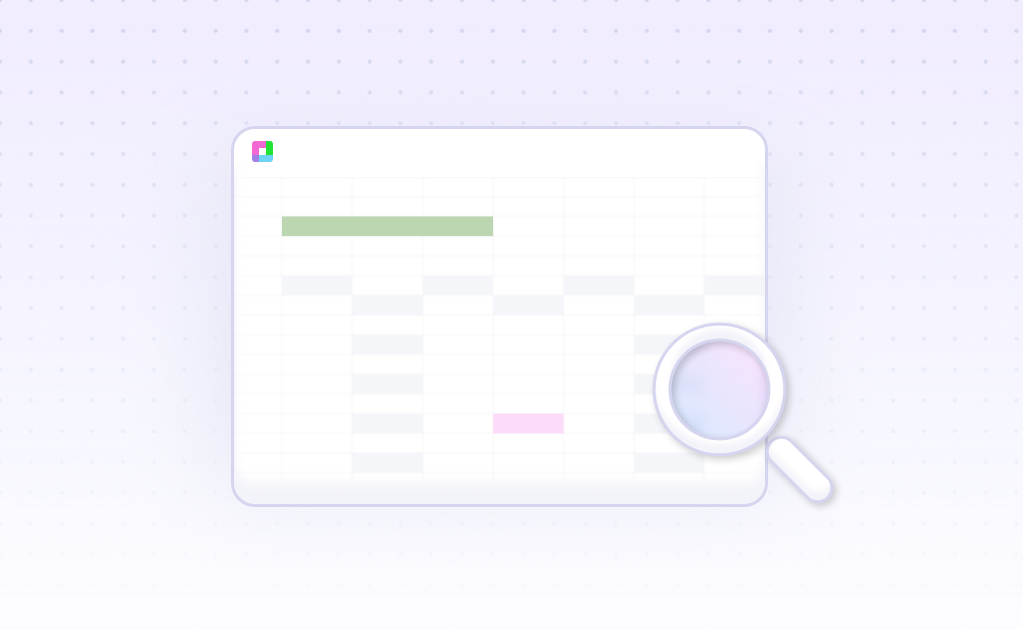
Introduction
Excel remains a powerful tool for financial statement analysis, offering automation, accuracy, and flexibility in data management. Its collaborative features and visualization capabilities, enhanced by add-ins like Zebra BI for Office, enable thorough statement of financial position analysis.
Sourcetable revolutionizes this process by combining AI-powered capabilities with traditional spreadsheet functionality. As a next-generation data analysis platform, it features a chatbot that responds to natural language commands and provides data-driven suggestions. With integrations to over 100 data sources and support for Python and SQL, Sourcetable accelerates financial analysis tasks from formula creation to data visualization.
Discover how Sourcetable streamlines statement of financial position analysis - try it at sourcetable.com/signup.
Why Sourcetable Is Superior for Statement of Financial Position Analysis
Sourcetable transforms financial position analysis through advanced AI capabilities and automated features that surpass traditional Excel workflows. The platform's integration with SQL and Python enables deeper financial insights, while automatic formula generation for functions like SUM and VLOOKUP streamlines analysis tasks.
Enhanced Data Quality and Accuracy
Unlike Excel, Sourcetable automates data cleaning and validation processes using AI algorithms, significantly reducing human error in financial statements. This automation ensures higher data quality and more reliable analysis results while saving valuable time.
Advanced Visualization and Reporting
Sourcetable automatically generates interactive reports and charts, surpassing Excel's manual visualization process. These AI-powered visualizations help users better interpret financial position data and improve communication among stakeholders.
Collaborative Features
Both Sourcetable and Excel offer multi-user collaboration, but Sourcetable's integration of AI-powered insights with collaborative features creates a more efficient environment for financial analysis. Teams can focus on value-added activities while automation handles repetitive tasks.
Data-Driven Decision Making
Sourcetable's AI capabilities analyze historical data and identify patterns more efficiently than Excel's traditional tools. This enhanced analysis leads to more accurate forecasting and better-informed financial decisions.
Benefits of Financial Position Analysis with Sourcetable
Financial position analysis enables informed decision-making, performance evaluation, and future planning. Traditional spreadsheet tools like Excel can be cumbersome for large datasets, but modern AI-powered alternatives offer significant advantages.
Why Choose Sourcetable Over Excel
Sourcetable delivers near-instant computations for tasks that take hours in Excel. It handles multi-gigabit files efficiently and supports advanced 3D and 4D data types with vector queries and transformations.
The platform's AI assistant streamlines workbook analysis, data cleaning, chart creation, and error handling. It syncs with databases like Postgres, MySQL, and MongoDB, plus over 100 business applications including Stripe, Zendesk, and Hubspot.
Enhanced Analysis Capabilities
Sourcetable combines familiar spreadsheet features like A1 notation and cell-based referencing with powerful SQL querying capabilities. Technical users can perform comprehensive data analysis while generating accurate forecasts and identifying trends through automated processes.
The AI-powered system excels at pattern recognition, data visualization, and automated chart generation. These features enhance data storytelling and improve communication of financial insights across organizations.
Financial Position Analysis with Sourcetable: Key Ratio Examples
Sourcetable, an AI-powered spreadsheet solution, enables comprehensive financial position analysis through liquidity, profitability, and solvency ratios. This modern Excel alternative accelerates analysis while improving accuracy and allowing teams to focus on strategic insights.
Liquidity Analysis
Key liquidity ratios assess an organization's ability to meet short-term obligations. The current ratio Current Assets / Current Liabilities evaluates near-term asset coverage. The quick ratio (Cash + Investments + Receivables) / Current Liabilities focuses on liquid assets. Days of cash on hand (Cash + Investments) / ((Total Expenses – Depreciation – Bad Debt Expense) / 365) measures cash reserves.
Profitability Assessment
Profitability metrics evaluate financial performance through operating margin, total margin, return on assets, and return on investments. The own source revenue ratio indicates self-generated income, while return on equity tracks net asset growth.
Solvency Evaluation
Solvency ratios examine long-term stability. The liability-to-asset ratio reveals third-party obligations. The debt burden ratio measures borrowed funds, while coverage ratios assess debt repayment capacity. The capital asset condition ratio (net investment in capital assets t - net investment in capital assets t-1) / net investment in capital assets t-1 tracks infrastructure investment.
Real-World Application
The City of Bothell demonstrates practical application, reporting a 584% liquidity position, 61% operating margin, and 120% near-term solvency. These metrics provide comprehensive insight into the organization's financial health and decision-making capacity.
Use Cases for Statement of Financial Position Analysis with Sourcetable
Automated Financial Document Processing |
Process thousands of pages of financial documents including CIMs, prospectuses, and loan agreements in seconds. Extract and analyze key data points automatically from balance sheets, income statements, and cash flow statements. |
Cross-Company Financial Analysis |
Standardize financial metrics across competitor companies for horizontal analysis. Compare line items across multiple years using automated ratio calculations like |
Enhanced Financial Forecasting |
Automate budgeting and variance analysis workflows. Leverage AI to improve predictive analytics and generate detailed financial forecasts based on historical performance data. |
Comprehensive Statement Analysis |
Perform vertical analysis to understand relationships between line items. Automatically detect off-balance-sheet obligations in footnotes and analyze their impact on financial position. |
Frequently Asked Questions
What is a statement of financial position analysis?
A statement of financial position analysis examines the balance sheet of a business to understand its financial circumstances over a specific time period. It evaluates what a business owns (assets), what it owes (liabilities), and its total net worth (equity).
How does Sourcetable help with statement of financial position analysis?
Sourcetable enables you to manage financial data and create insightful reports for analyzing balance sheet components. It provides AI-powered capabilities that make financial analysis faster, smarter, and more accurate compared to traditional spreadsheet methods.
What financial statements are typically analyzed alongside the statement of financial position?
The statement of financial position is typically analyzed in conjunction with three other crucial financial statements: income statements, cash flow statements, and statements of shareholder equity.
Conclusion
Excel remains a powerful tool for financial statement analysis, offering automation, accuracy, and data visualization capabilities. Through horizontal analysis, vertical analysis, and ratio analysis, Excel enables comprehensive evaluation of business performance and value. Various AI tools have emerged to enhance Excel's capabilities, streamlining workflows and automating complex tasks like scenario analysis and financial forecasting.
For those seeking an alternative to traditional Excel analysis, Sourcetable combines Excel's analytical power with AI capabilities. This innovative platform enables efficient financial statement analysis without requiring extensive Excel expertise, making sophisticated financial analysis accessible to more business professionals.
Recommended Analysis Guides
Connect your most-used data sources and tools to Sourcetable for seamless analysis.
Frequently Asked Questions
If you question is not covered here, you can contact our team.
Contact Us





